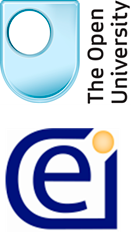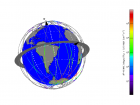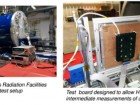Cryogenic Irradiation of a p-channel CCD at 153 K and Upcoming Irradiation Studies
Cryogenic Irradiation of a p-channel CCD at 153 K and Upcoming Irradiation Studies.
(Centre for Electronic Imaging, The Open University).
Talk summary:
A number of recent studies have shown that the temperature history of a CCD after the irradiation impacts the performance of the detector. This can lead to the performance of a device irradiated at room temperature being different to one irradiated while held at a mission appropriate operating temperature.
The difference in performance is linked to the mobility of defects at different temperatures, which will result in the type of stable defects present within the device silicon being different for a cold and warm irradiation. The implication of this on device performance is in the selection of the operating temperature and timings, i.e. a room temperature optimization may lead to the selection of a transfer scheme which under cryogenic operation in space suffers from a defect with an emission time constant comparable to the transfer time.
This presentation reviews some of the initial results from an ESA funded study using an e2v technologies p-channel CCD204 irradiated at 153 K with a 10 MeV equivalent proton fluences of 1.24×109 and 1.24×1011 protons.cm-2. The dark current, cosmetic quality and the number of defects identified using trap pumping immediately were monitored after the irradiation for a period of 150 hours with the device held at 153 K and then after different periods of time at room temperature.
This has enabled us to observe the change in defect concentrations as a function of time, which enables optimal operating conditions to be selected. The talk also includes some of the future work that is planned to take place to support Euclid mission.
Speaker:
Jason Gow obtained his Ph.D. from Brunel University in 2009 for work on radiation damage mitigation for the detectors used in the C1XS instrument launched onboard the ISRO Chandrayaan-1 spacecraft to perform X-ray fluorescence analysis of the Moon’s surface. He has worked at the Open University in the Centre for Electronic Imaging for the past 8 years and now holds the post of Research Fellow.
He is interested in predicting, understanding and mitigating the impact of radiation damage on CCD and CMOS detectors for space applications, through environmental modelling and the experimental analysis of device performance. Jason is involved in a number of missions including the Euclid visible imager, the JANUS camera on JUICE and the CLASS X-ray instrument onboard Chandrayaan-2. He has also been involved in the characterisation of a number of different variants of e2v p-channel CCD looking into their improved radiation tolerance when compared to their n-channel equivalent.
- Quantum Key Distribution - 7th November 2022
- Conducted Immunity - 20th May 2019
- Electrical transients Test - 2nd May 2019




